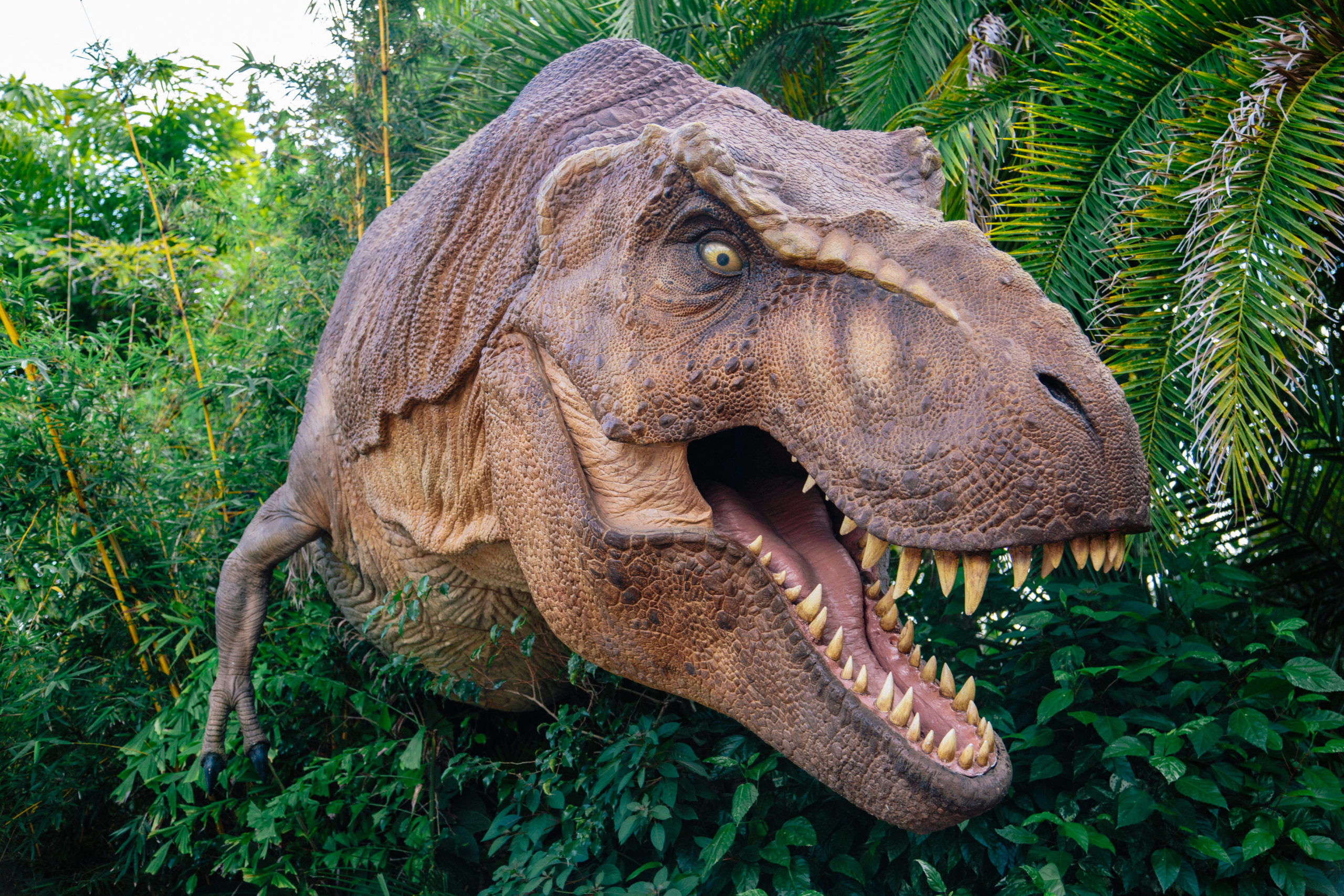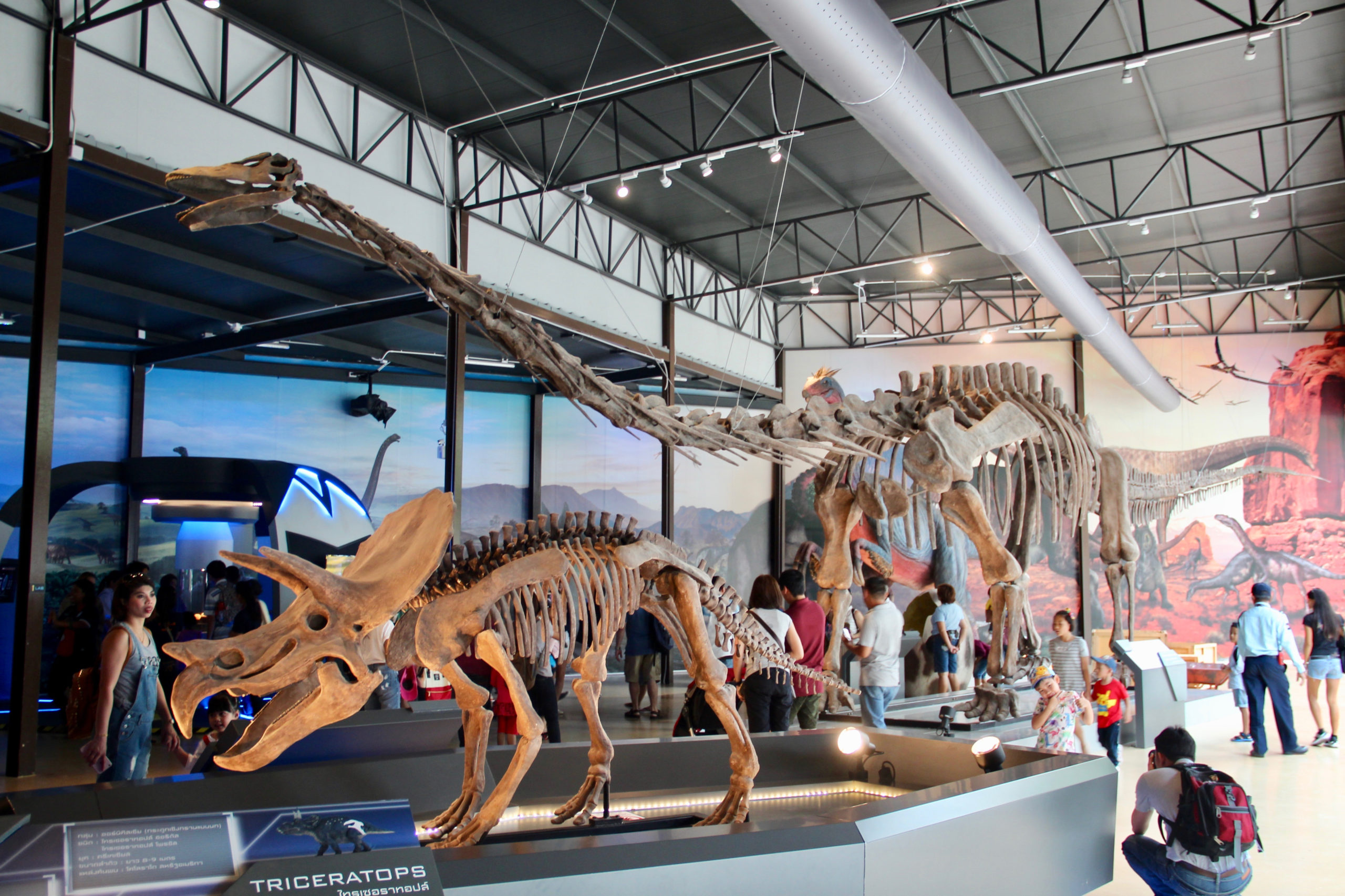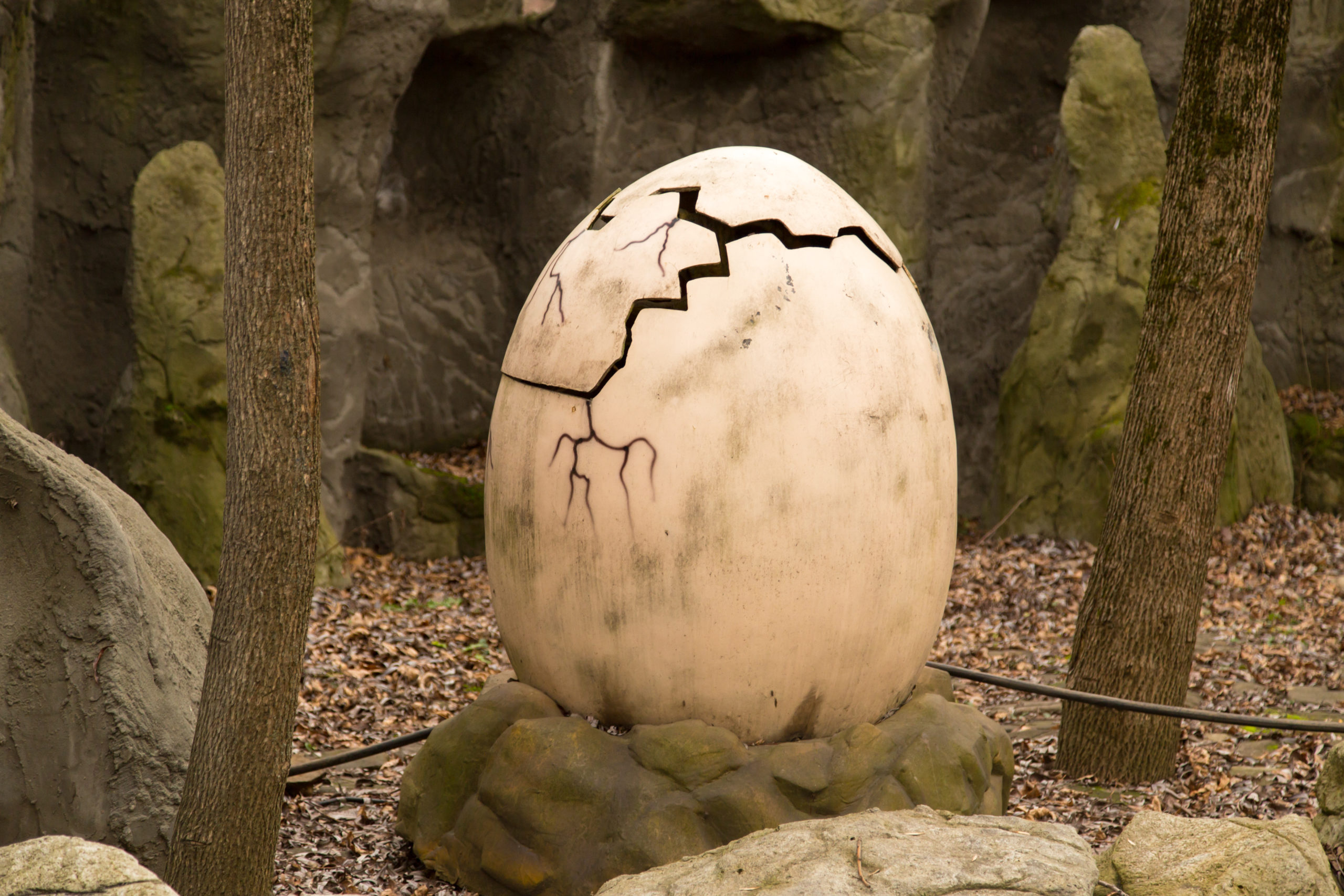“Bingo, Dino DNA” : Is Jurassic Park’s Mosquito-to-Dinosaur Experiment Possible?
“Bingo, Dino DNA” : Is Jurassic Park’s Mosquito-to-Dinosaur Experiment Possible?
The best movies have a basis in reality, no matter how far-fetched their stories and settings are. They can take place in a fictional world or galaxy, but the real relationships between characters and relatable struggles they have keep us grounded in the spectrum of human emotion. Jurassic Park is an award-winning film that is memorable due to its impressive special effects and large amount of quotable lines (with Jeff Goldblum delivering most of them). But as fun as it is to experience this fictional amusement park of dinosaur-fueled nightmares, it’s worth wondering: is it really possible to clone dinosaurs out of DNA found in a mosquito? Let’s take a closer look at this storyline and the true science behind it.
The Research Behind the Story

Before we dive into the actual scene, we need to take a brief look at the research and science that inspired the story in the first place. Jurassic Park began as a novel, written by Michael Crichton and published in late 1990. The “rumor,” if you want to call it that, is that Crichton had the book basically written except for one key detail: how the scientists get the dinosaur DNA in the first place. Entomologist and writer George Poinar Jr. provided the answers that made the novel and the movie more believable. Poinar specialized in discovering the genetic makeup and statistics of insects preserved in amber. The most helpful study for Crichton’s research was Poinar’s 1982 study on a fossil fly, found to be 40 million years old, that was kept in amber and could potentially have its DNA extracted. It was a team effort between Poinar and his wife Roberta, an electron microscopist at Berkley, as they tested the amber and the fly to see how the preservation worked. This study was the basis for Crichton’s story and gave him the scientific backing he needed. Poinar liked the authenticity of the amber, but he said in later interviews that he believes it would be more possible to get dinosaur DNA from bones than from the blood in a trapped mosquito.
Interestingly enough, there was a study published in 1993 the day before Jurassic Park premiered. Nature journal showcased a study about the discovery of a 130 million year old weevil and the scientists’ attempts at DNA extraction. This study wasn’t a part of the promotion surrounding the premiere, but it’s pretty unlikely that the publication date was a complete coincidence. In terms of the science behind the story, Poinar’s study was a major influence. We’ll talk about the logistics of the final description of mosquito DNA later, but let’s first look at the mosquito that was used in the famous movie.
The Famous Mosquito

One of the most remembered props from Jurassic Park is John Hammond’s walking stick with the orb of amber encasing a huge mosquito on top. The audience learns that this kind of mosquito is the one that the scientists extracted DNA from in order to create and clone the dinosaurs in the park. The dialogue in the lab scene and the colorfully-animated video featuring everyone’s favorite DNA strand, Mr. DNA, explain that a mosquito drank blood from a dinosaur millions of years ago and stored the blood in its gut until it was extracted in modern day. The giant mosquito that is featured in the movie is actually an Elephant Mosquito, a species of Toxorhynchites. This doesn’t seem that special, but here’s the thing: Elephant Mosquitoes are one of the very few mosquito species that don’t drink blood. They live off of food reserve from the larvae stage, as well as nectar and honeydew. So it’s not possible for this monstrous mosquito to store any kind of exotic DNA anyway, regardless of the separate logistics of dinosaur cloning.
Another scientifically-incorrect factor of this movie-star mosquito is that the one in the film is a male. Scientists have determined this by the shape of its proboscis, or mouth parts. In reality, male mosquitoes don’t ever drink blood and just live off of nectar and juices from fruits. Female mosquitoes are the ones to blame for our itchy bites every summer, but even they don’t bite every day. They only drink blood when they need protein for their eggs. The idea of DNA found in a mosquito, combined with a frog’s DNA, and implanted in an ostrich egg is a cool concept for a movie, but it unfortunately is not very backed by science.
The Dino Deal: Fallacies in Movie Science

We have come to the main point of this analysis. After discussing why the specific mosquito isn’t accurate to the premise at all, the focus now turns to the actual process of preserving mosquitoes in amber for supposedly millions of years. The main issue with amber, a later stage of resin from trees, as a preserver is that it is slightly porous, according to Poinar. This means that there is some air coming into the piece at all times, which could damage the DNA. You would have to go in and repair the DNA to keep it intact. In addition to this, DNA has an approximate half-life span of 521 years, which isn’t much compared to how long ago dinosaurs lived on Earth. The DNA and hydrogen bonds found in the insect and amber break down over time, which does not bode well for anyone wanting to extract the DNA.
A study from the University of Manchester validates the inability to keep DNA in tact in a prehistoric insect. They looked at copal, the stage between resin and amber, to see how it kept the internal insects in tact. But they discovered that there was not any ancient insect DNA found inside, rendering the copal basically useless besides holding a dead insect. There would need to be a completely different preservation method of the insect to keep any kind of DNA salvageable over centuries. Long story short, the basic premise of Jurassic Park’s scientific storyline is not very scientifically sound at all. Amber may preserve insects for an impressive amount of time, but it doesn’t do much to help maintain the complex strains of DNA that could be found in its stomach contents.
Can Mosquitoes Lead to Dinos?

This is the million dollar question we ask after watching the film and thinking about the research that seems to disprove the story’s whole focus. The short answer to this question is no, and you can likely guess why based on the previous sections. Insects and other tiny creatures have found to be preserved in amber and other natural materials, but any outside DNA they may be housing is not likely to be strong enough for any kind of cloning and creating process. The oldest discovered DNA is about 1.2 million years old, which is an impressive amount of time for anything that minuscule to survive. But considering the fact that dinosaurs are estimated to have lived over 60 million years ago, we are a long ways from finding their DNA in-tact today. The main reason why is that DNA is very delicate and can be impacted by airborne bacteria that is invisible to us, so it would not be able to survive in any old fossilized resin. It would need to be in an air-tight container of some kind, which is not easy to find when looking at the natural world millions of years ago.
However impossible this film is in real life, one definitive positive has come out of its faulty science. Real scientists were inspired to conduct experiments and look into the possibilities of this DNA-centered creation actually happening. We have learned a lot about prehistoric DNA and dinosaurs (and mosquitoes) as a result of these studies, and this knowledge is invaluable. As long as we take the film and the novel at entertainment value rather than scientific value, we can still enjoy the wild adventures of Dr. Alan Grant and his crew of dinosaur-loving scientists.
Pest Control Conquers Mosquitoes
While we may not be cloning dinosaurs anytime soon, which may not be the worst thing – haven’t we had enough movies detailing the flaws in this idea? – mosquitoes are still a major problem for us today. In addition to delivering itchy bites to us when we spend any time outside, mosquitoes can carry dangerous diseases like malaria and yellow fever. Our experienced technicians know how to eliminate mosquitoes so that you can enjoy your outdoor space once again. Contact our team to learn more about our services and how we use our eco-friendly treatments to solve pest problems so that insects don’t…find a way.
***Disclaimer: Section 107 of the United States Copyright Act recognizes “fair use” copywriter content as such: “Notwithstanding the provisions of sections 106 and 106A, the fair use of a copyrighted work, including such use by reproduction in copies or phono-records or by any other means specified by that section, for proposes such as criticism, comment, news reporting, teaching, scholarship, or research, is not an infringement of copyright.” This blog post may contain certain copyrighted works and characters that were not specifically authorized to be used by the copyrighted holder(s), however, the content on this post qualifies as “commentary” on the copyrighted works under the “fair use” doctrine of the U.S. Copyright Act and is thereby protected by federal law. Furthermore, we do not claim any ownership or creative rights of any characters on this list, and all rights outside of the fair use doctrine belong to the respective owner(s).
Citations
Boissoneault, L. (2018, June 15). Jurassic Park’s unlikely symbiosis with real-world science. Smithsonian Magazine. Available at https://www.smithsonianmag.com/science-nature/jurassic-park-reveals-delicate-interplay-between-science-and-science-fiction-180969331/ (Accessed on June 8, 2022).
Insect Cop Editors (2020, May 13). Two mosquito mistakes that the first Jurassic Park movie made. Insect Cop. Available at https://insectcop.net/two-mosquito-mistakes-that-the-first-jurassic-park-movie-made/ (Accessed on June 8, 2022).
Knapp, A. (2013, September 14). Scientists show that Jurassic Park – style dinosaur cloning couldn’t happen. Forbes. Available at https://www.forbes.com/sites/alexknapp/2013/09/14/scientists-demonstrate-that-jurassic-park-couldnt-happen/?sh=1f49decb2f7e (Accessed on June 8, 2022).
Okoyomon, A. (2022, June 6). Science of Jurassic Park: Can an extinct animal be recreated from a DNA-filled mosquito?. Science World. Available at https://www.scienceworld.ca/stories/science-of-jurassic-park-can-an-extinct-animal-be-recreated-from-a-dna-filled-mosquito/ (Accessed on June 8, 2022).
Tu, C. (2016, March 25). What the man who inspired Jurassic Park’s science thinks about the future of wildlife research. The World. Available at https://theworld.org/stories/2016-03-25/what-man-who-inspired-jurassic-parks-science-thinks-about-future-wildlife (Accessed on June 8, 2022).

